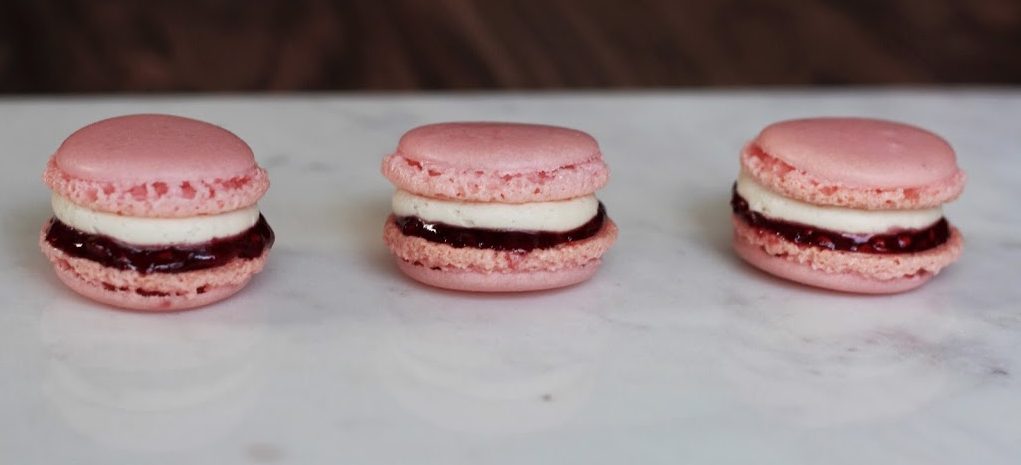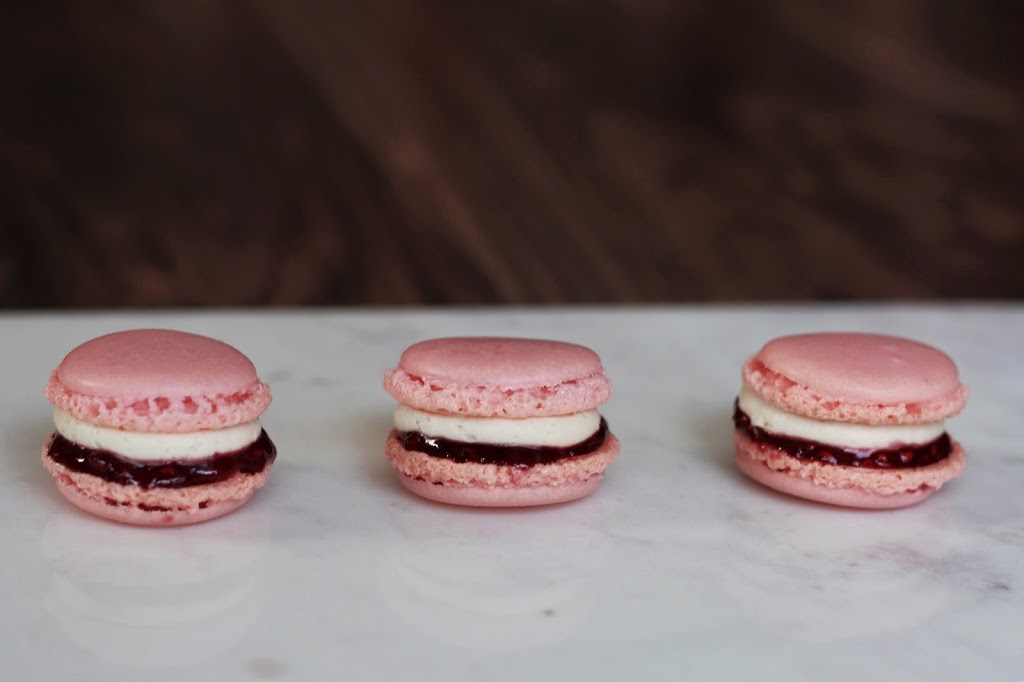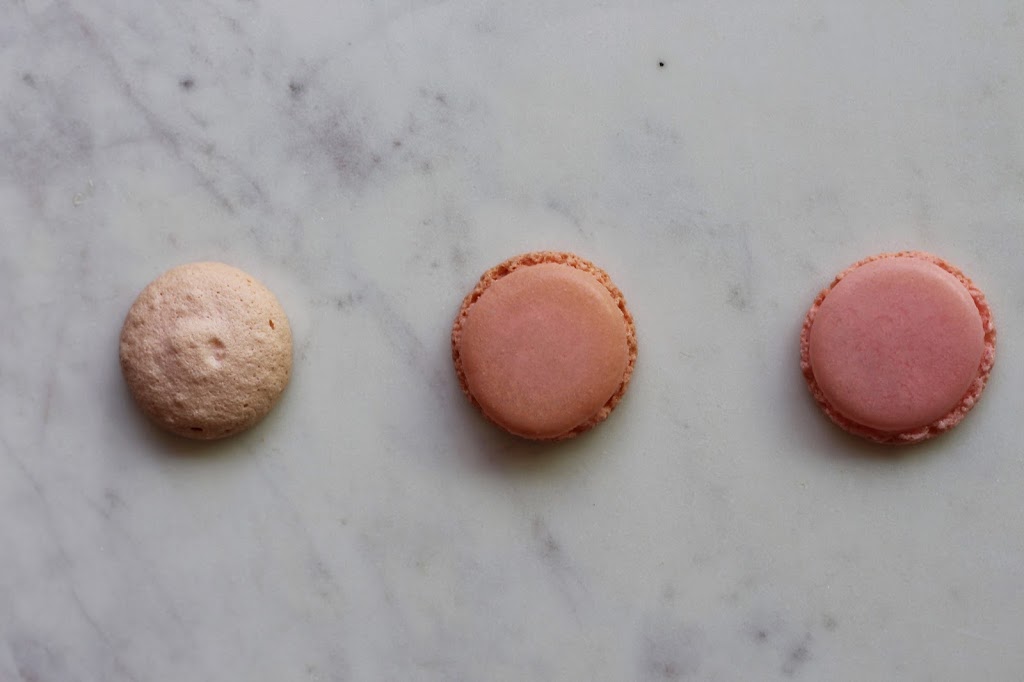Double Layer Raspberry Macarons
I’ve always had a special love for French macarons. I love how delicate and beautifully crafted they are. I also love how they are made in unique and avant grade flavors. I recently took a class at Sur La Table aimed at mastering the French macaron. Out of everything I’ve attempted baking myself at home, macarons are the one thing I wanted to take a class for before trying to make them myself. I had never attempted to make macarons and knew that this class was the perfect way to learn.

The macarons I made in the class turned out wonderfully so I figured I was ready to make my own batch at home a few days after the class, while it was still fresh in my memory. I followed the recipe for the shells to-the-t (If you follow me on snapchat you probably saw me documenting the whole process). However, when the macarons came out of the oven lets just say they didn’t even resemble a macaron. They were porous, lumpy, overly browned, domed and had no feet! This was after 5 1/2 hours of baking! You can see what they looked like in my macaron progress picture below.
Macaron Progress
I was quite discouraged to say the least but this morning (the day after my macaron failure) I decided to give it another go. I went with a shell recipe online that had many good reviews and also had a video to accompany it. Saying this, I still had to rely on the knowledge from my class when it came to knowing when the batter had been folded enough, the technique involved in piping the macarons and telling when the skin had formed on the shells. I made a basic macaron shell (colored pink) and a double layer filling of vanilla buttercream and raspberry jam.
After going through such a tumultuous process, I wanted to share the recipe I used with you guys (You can find the shell recipe here and the buttercream recipe here, for the jelly I used Bonne Maman Raspberry preserves). I also want to share my best tips on how I achieved a perfect French macaron so you all can have an easier time mastering these adorable little treats.

Tips to achieve a perfect French Macaron
- The first mistake I made during my first attempt was not using room temperature eggs. This is key in achieving a good meringue.
- My next tip is to be sure you sift the almond flour & powdered sugar mixture. This is important to achieve a smooth macaron shell.
- My most crucial tip is making sure that you fold the dry mixture into the meringue not too little and not too much. I really struggled with this but after trial and error I found that the perfect consistency is when the batter is able to ribbon off the spoon and the ribboning dissolves back into itself after 10 seconds. Over mixing leaves you at a point of no return so I suggest testing the batter (as I mentioned how to do so) often.
- Going off my previous tip, you want to be sure the batter is ready to be piped by testing piping one macaron. If the dollop left after you pull away dissolves back into itself after 10 seconds than it is ready.
- It is vital to let the macarons form a skin before putting them in the oven. This means that you can touch or brush your finger against the macaron and nothing comes off onto your finger. The first batch I made took 2 HOURS to form a skin. But the second recipe I used only took 20-30 minutes to form a skin and I could begin to see the skin was forming at about 15 minutes.
- If you look at the second macaron shell in my progress photo you can see that it is browned. This is because I put the tray in the middle rack. I put the next tray on the bottom rack and the shells came out perfectly pink and not browned. I recommend always putting the tray on the bottom rack to avoid this issue.







